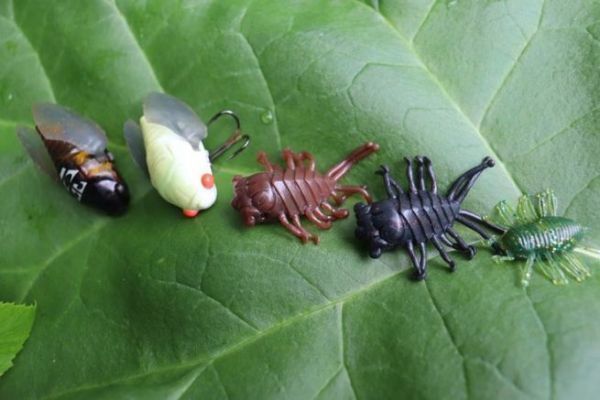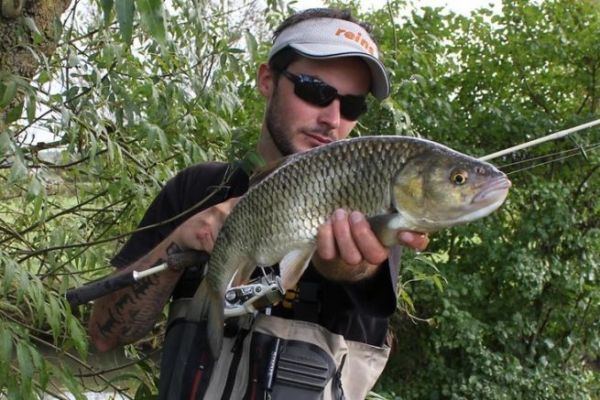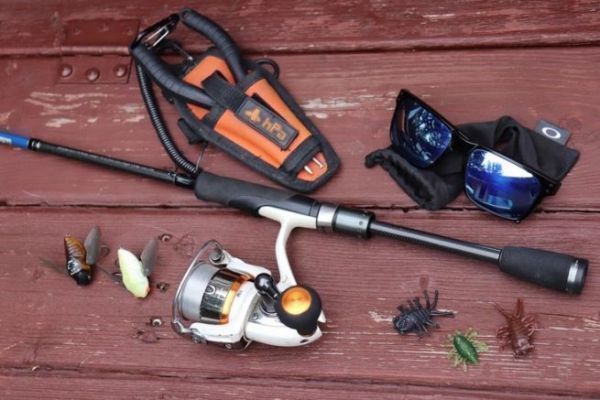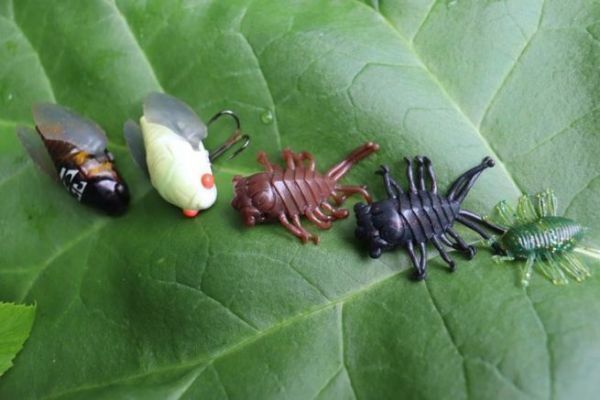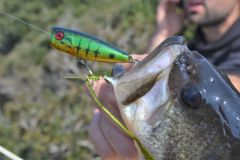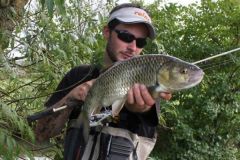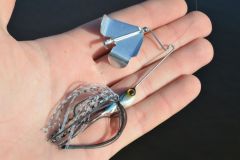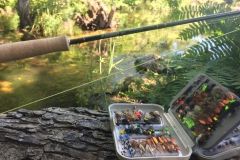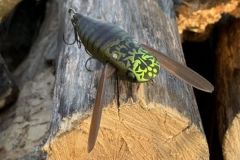Hard lures
Hard lures are often already fitted with hooks, and simply need to be connected to the line to fish with. As discretion and balance of the lure are two points to be preserved, no staples or broken rings should be used, so the best way to connect them is to tie the leader directly to the lure.
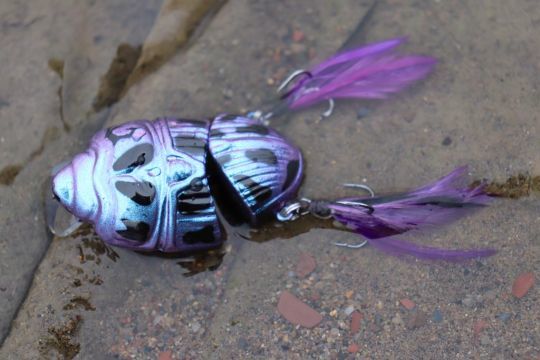
Versions with a bib can be brought back, to put them into swimming action, and thus imitate an insect trying to reach the edge. They can also be left motionless, which is often where they are most effective.
Soft lures
The advantage of soft lures is that their manufacturing process allows for greater possibilities in terms of shape, notably by adding moving appendages, which create additional vibrations and enhance realism.
There are two main variants for attaching a soft insect lure.
In both cases, I recommend the use of simple drop shot or carp hooks, as their shape and large aperture help to promote good tip clearance and striking. Depending on the size of lure used, sizes 10 to 14 are the most suitable.
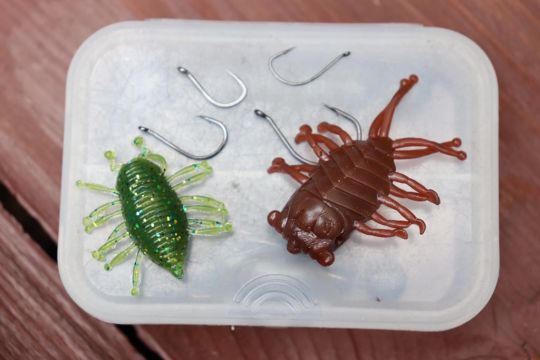
For models with an air pocket, which must not be pierced, it's best to set the single hook on one of the ends outside the air pocket.
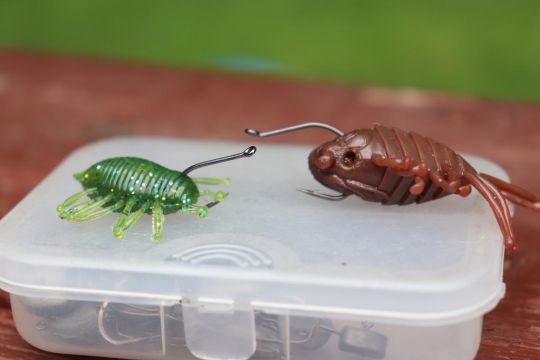
If the lure is full and floating, it's possible to pass the line inside the lure with a needle to hide the shank and keep only the apparent bend. In both cases, the point of the hook should point downwards, as this configuration gives a more successful hooking action.
As for striking, wait to feel the fish in the rod before striking, and don't strike hastily when you see the fish gobble, as this may take the lure out of the fish's mouth.
Sizes
Lures are available in a variety of sizes, but for a search for freshwater fish, a size of 3 to 5 centimetres is the most suitable. Larger lures are more suited to black-bass fishing, even if the principle, presentation and animation are very similar.
Discreet progress
Most of the time, fishing with floating insects involves moving slowly along the water's edge to spot fish. To make it easier to spot fish, it's essential to use good polarized glasses. During this approach, you need to be careful not to position yourself in the fish's field of vision, which includes not casting shadows or making noise and vibrations on the ground.
Realistic animation
Once you've spotted your fish, position yourself so that it can't see you, and don't cast at its head, as this may scare it.

It's best to cast ahead of him and let the lure drift naturally, without trying to animate it, at the risk of frightening the fish. Indeed, the aim is to imitate an insect that has fallen to the surface of the water, struggling mainly on the spot, without really moving.
Some brands
Even if at first sight this type of lure doesn't seem complex, you still need to select well-designed models, to have a lure that always falls on the right side and floats perfectly.
In terms of tried-and-tested brands, if you look for Reins, Tiemco or Illex, you'll easily find what you're looking for.

 /
/ 